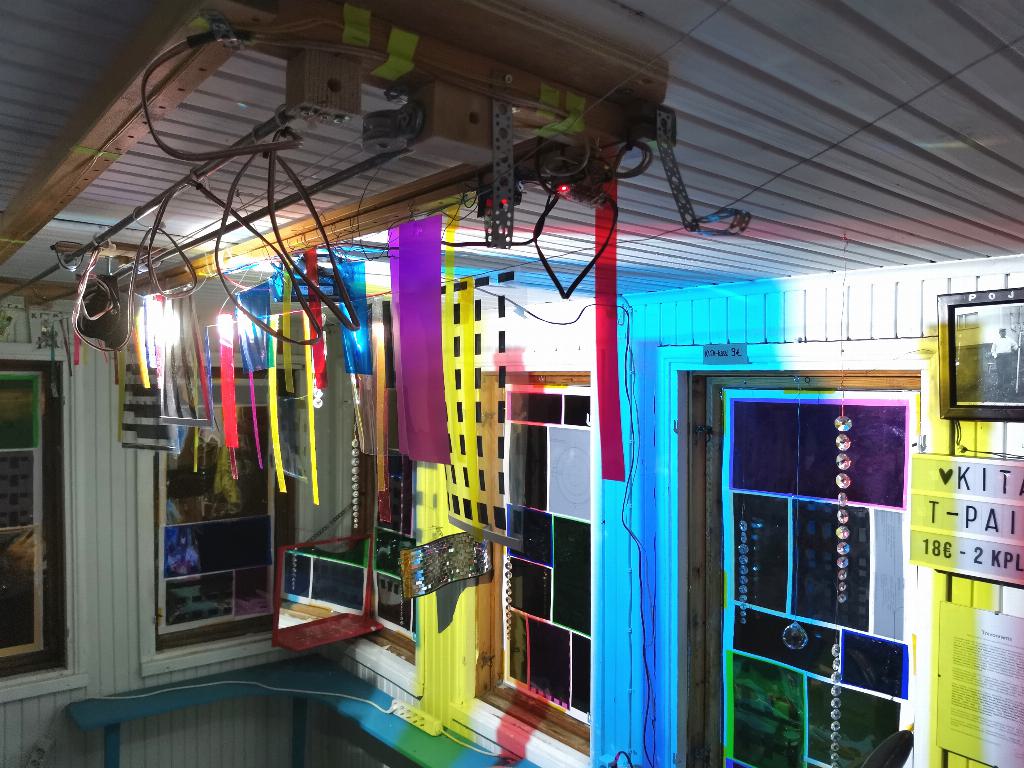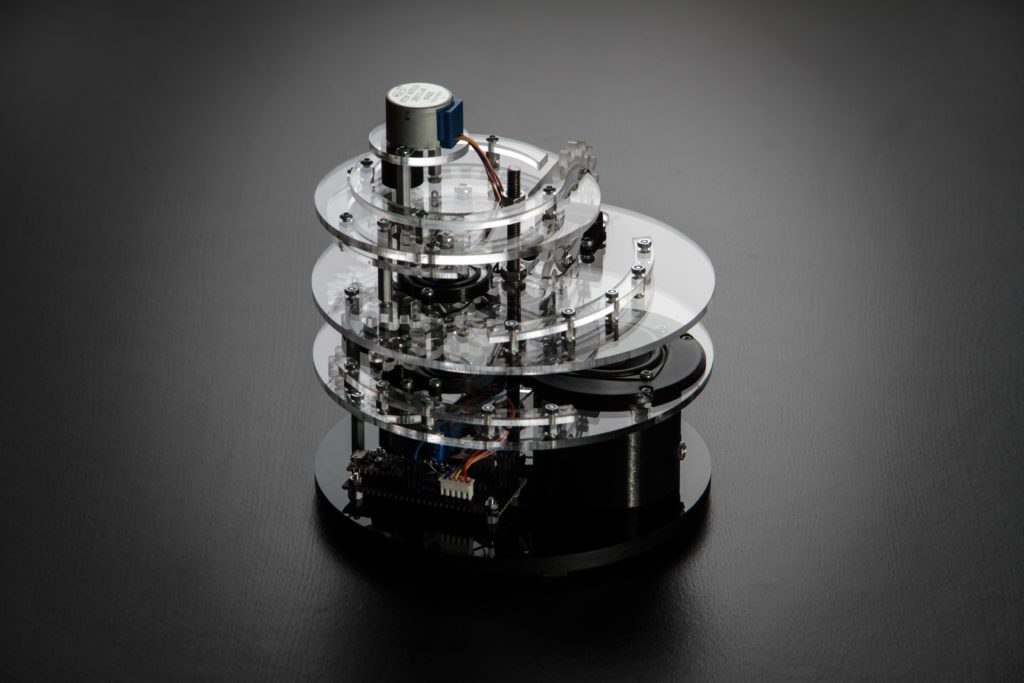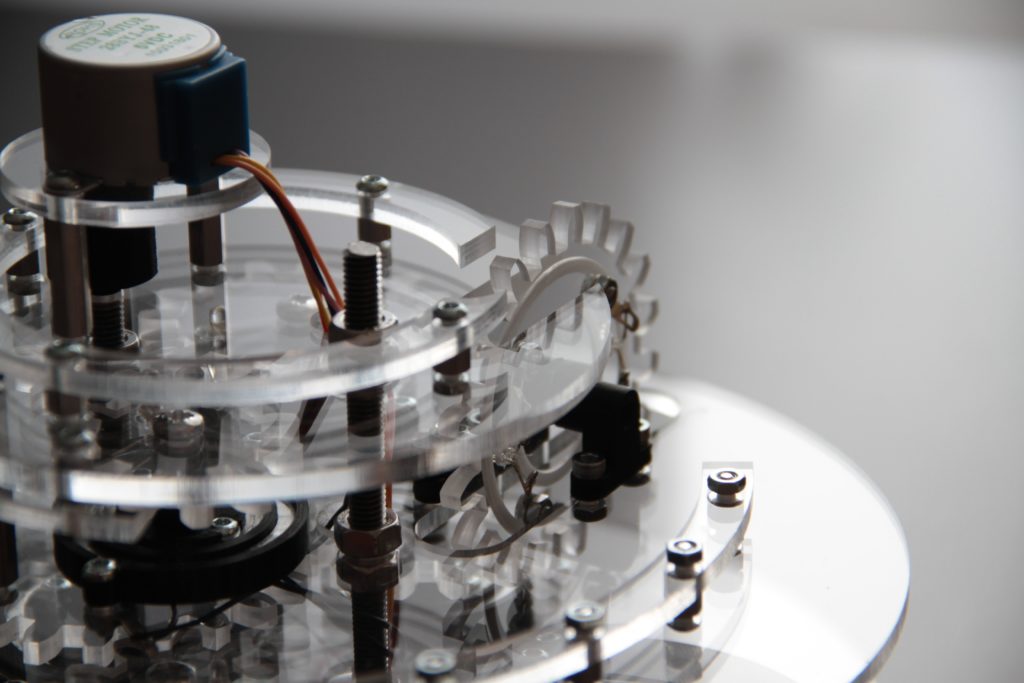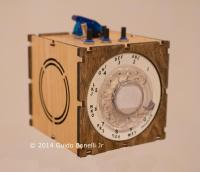07

If you’re ever driving through rural Finland about an hour south of Jyväskylä, you might come across the Haihatus art center. That includes KITA, “the house of kinetic arts.” You’ll recognize it right away by its bold swaths of vibrant paint. And if you come by at night, you’ll see the snow illuminated in dancing colors by a kinetic art installation built by Niklas Roy and Kati Hyyppä.
Because the building is unheated and can reach temperatures as low as -30°C (-22°F), KITA remains closed through the winter. Roy and Hyyppä approached this project with the goal of turning the building itself into a kinetic art piece for people to enjoy through the cold months. To achieve that, they lit the windows and added movement. Lights inside the building move along tracks and motors pull them with spools of twine. An Arduino Nano development board controls the motors through H-bridge drivers. Various reflectors and filters alter the lights as they move.
To make that even more dynamic, they animated the illumination and introduced sound. A control box built into an old tool case contains another Arduino Nano that can switch the lights through relays. That Arduino also generates sounds and melodies from algorithms based on random inputs, but synced to the lights.

This project came with unique challenges related to the weather, as many electronic components act unpredictably at these extreme temperatures. But the installation worked well enough to unveil on New Year’s Eve 2023, when the people living in the town of Joutsa got to enjoy the dazzling inauguration.
The post This kinetic light installation illuminates the Finnish snow appeared first on Arduino Blog.







